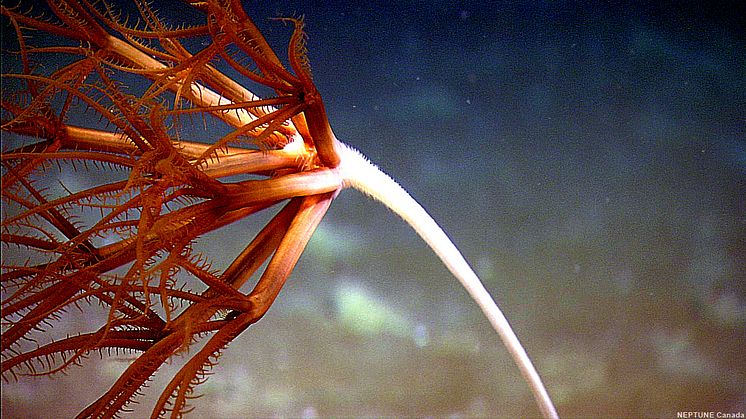
Nyhet -
Digging deeper into trawling effects
Bottom trawling has been shown to have significant impacts on seafloor communities, varying with intensity of trawling, trawling technology, depth, and bottom type. The effects from trawling include removal of habitat-forming organisms, homogenization of seafloor habitats, altered sediment structure, and reduced oxygen penetration into the sediments. These changes not only reduce the local and regional biodiversity, but also alter the ecosystem services provided by benthic communities, including nutrient cycling at the sea floor, and the food-web interactions support commercial fish and shellfish stocks. The traits of species that would be most sensitive to trawling activities include slow moving, large-biomass species (corals, sponges), filter feeders, grazers, bioturbating decapods, large molluscs, echinoderms, and cnidarians.
The Svalbard area has experienced varying trawling intensities over the past several decades. Shrimp trawling in the Barents Sea in general and around Svalbards in particular, has varied considerably since the 1990s. In the recent years there has been a move towards larger vessels entering this fishery.
With the expansion of the range of Atlantic cod, the high abundance of shrimp around Svalbard and requests from the fisheries sector for increasing bottom trawling within the 12 nm limit, it is likely that the trawling activity in the area will increase. Despite recent evidence that some benthic communities may be at particular risk to intense trawling, there has been little knowledge about the impacts of trawling on the seafloor around Svalbard. However, a recent study by the Norwegian Polar Institute, the Institute of Marine Research and Akvaplan-niva, has investigated epibenthic communities in several areas around the island Spitsbergen. The goal of the project was to identify trawling effects and suggest indicators for monitoring these effects, providing fisheries managers with better tools for modifying regulatory regimes.
The research team found that areas that have been subject to high trawling intensity also presented a high biomass of megafauna of which some species have a large body size. High body volume makes these species vulnerable to trawling activities and therefore useful as indicators, meaning that a stable population of these species implies low effects from trawling. The study also found that vulnerable species, such as the sea pen Umbrella encrinus, were among the top 10 species in areas with intermediate and high trawling intentisy. This indicates that even vulnerable animal groups must be used with caution as indicators of trawling effects in the Svalbard fjords. The project has been financed by the Fram Centre.
Photo: Imbellula sp. By Ocean Networks.